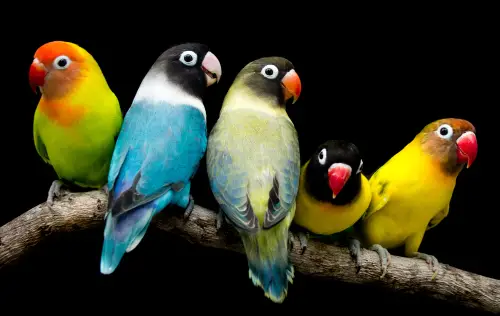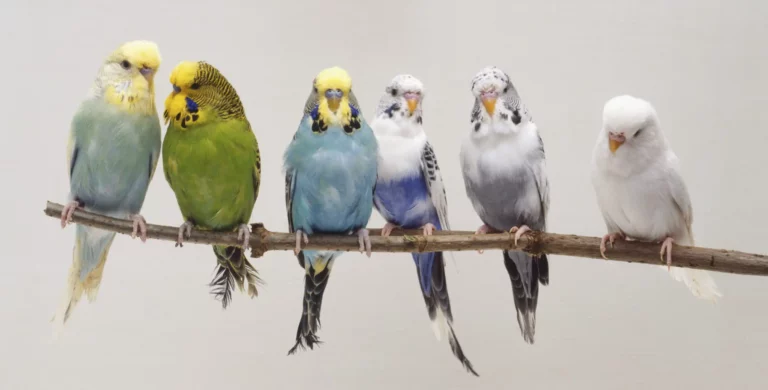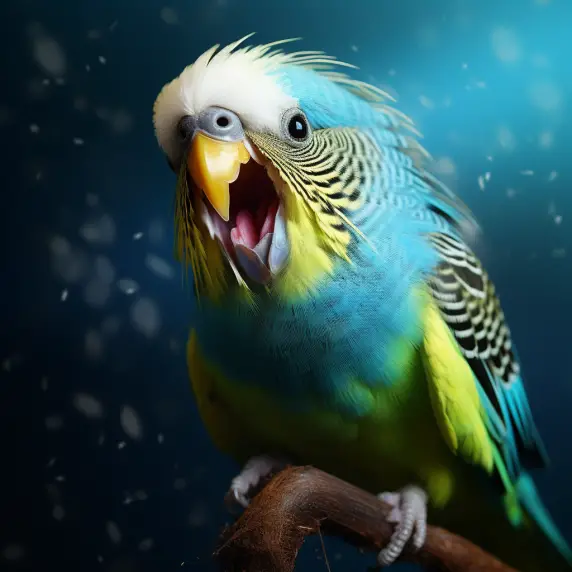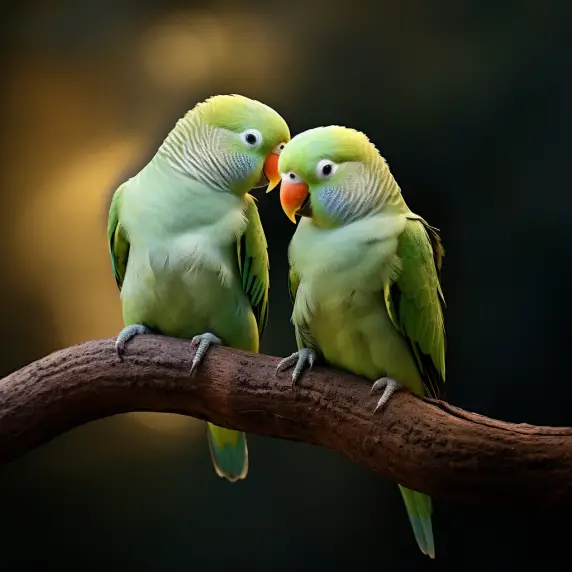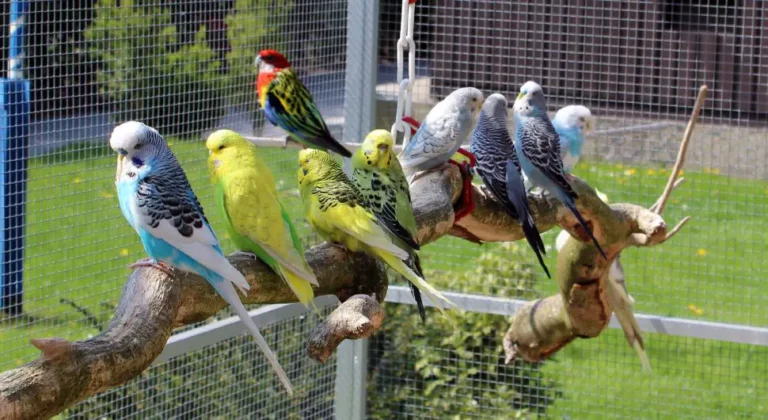The 6 Best Pet Birds for Families with Children
Choosing a pet bird can be a rewarding experience, especially for children. With the right guidance, you can find a bird that not only fits your family’s needs but also teaches valuable life lessons.
This guide will help you explore various bird species, ensuring a harmonious relationship between your kids and the new feathered family member. By understanding your family’s specific needs, you’ll be able to select a pet bird that will thrive in your home and bring delight for years to come.
Key takeaways
Some bird species are more suitable for families with children due to their temperament and care requirements.
It’s important to consider the child’s age and maturity when choosing a pet bird.
Birds such as budgies, cockatiels, and lovebirds can be good choices for families with children.
Families should consider the bird’s lifespan, as some can live for several decades.
Training and socialization are key for a positive relationship between the bird and the family.
Ensure children understand how to safely handle and care for the bird.
Evaluating Your Family’s Needs and Lifestyle
Before you embark on the exciting journey of bringing a pet bird into your home, it’s crucial to evaluate your family’s needs and lifestyle. Carefully considering these factors will ensure that both the bird and your family can coexist happily and comfortably.
- Time commitment and availability: Birds require daily attention, interaction, and care. Reflect on the time you and your family can commit to providing for a pet bird. Some species demand more attention than others, so understanding your availability will guide you in choosing the right bird for your family.
- Space requirements and bird size: Different bird species vary in size, and so do their housing needs. Assess the available space in your home to accommodate a birdcage, play area, and other bird-related items. Keep in mind that larger birds will require more space and a bigger cage, while smaller birds may need less room.
- Noise tolerance: Birds can be quite vocal, and some species are louder than others. Consider your family’s noise tolerance level and research the typical vocalizations of various bird species to ensure your new pet won’t disrupt your home life.
- Allergies and other health considerations: If any family members have allergies or sensitivities, it’s essential to choose a bird species that will not exacerbate these issues. Hypoallergenic birds, like Pionus parrots or Eclectus parrots, may be suitable for families with allergies.
- Budget for purchasing, feeding, and veterinary care: Owning a pet bird can come with various expenses, including the initial purchase, food, cage, toys, and routine veterinary care. Some bird species are more expensive than others, and larger birds may consume more food. Evaluate your budget to ensure you can provide the proper care your chosen bird needs to thrive.
By thoroughly considering these factors, you’ll have a solid foundation for choosing the perfect pet bird that aligns with your family’s needs and lifestyle, creating a happy and harmonious home for everyone involved.
The 6 Best Pet Bird Breeds for Families with Children
Once you have a clear understanding of your family’s needs and lifestyle, it’s time to explore some of the best pet bird breeds suitable for families with children. Each bird species has its unique characteristics, so consider which traits will complement your family dynamics.
1. Budgerigars (Budgies)
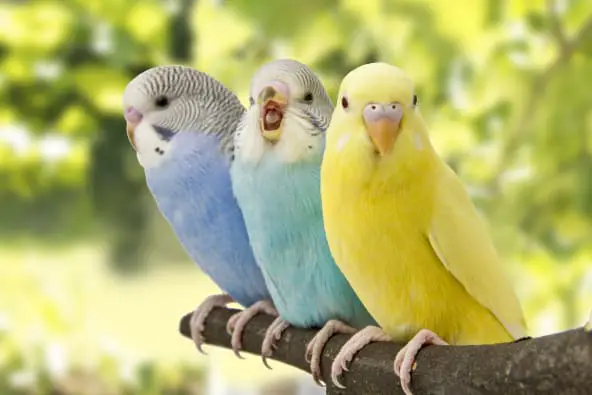
Budgies are small, low maintenance, and highly social birds that make great pets for families. They have charming personalities and are known for their ability to mimic human speech. Their small size and relatively easy-care requirements make them an excellent choice for families with limited space or first-time bird owners.
2. Cockatiels
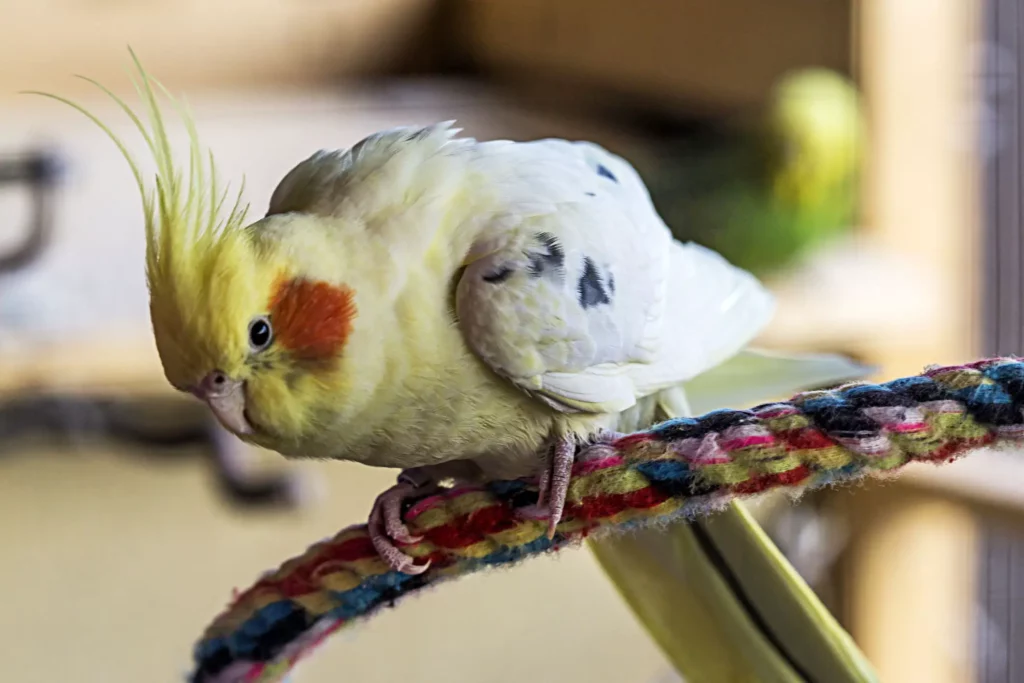
Friendly and trainable, cockatiels are another popular choice for families with children. They are known for their gentle and affectionate nature, making them great companions for kids. With moderate noise levels and a talent for whistling tunes, cockatiels provide plenty of entertainment without being overly loud.
3. Lovebirds
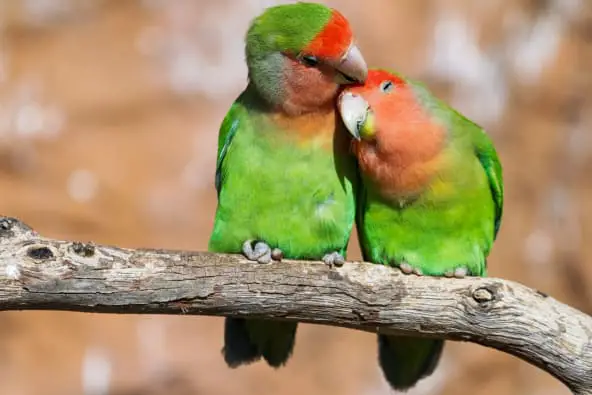
Lovebirds are affectionate, intelligent, and manageable in size. Their vibrant colors and curious nature make them a captivating addition to any household. They are highly social and form strong bonds with their owners, so they thrive on regular interaction and playtime.
4. Conures
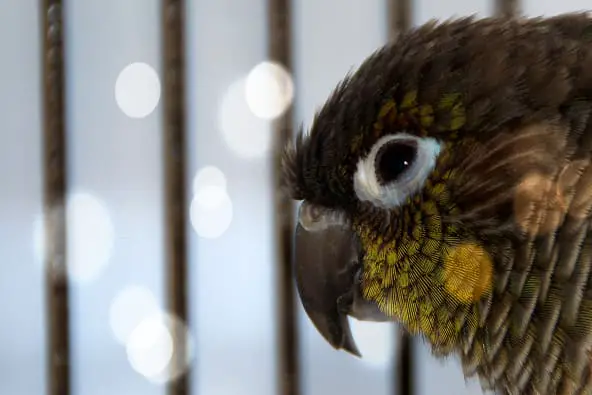
Playful, energetic, and colorful, conures make for lively pets that families with children will adore. They are highly intelligent and can learn to perform tricks and mimic sounds, providing endless entertainment for the whole family. Keep in mind that some conures can be a bit noisy, so consider your family’s noise tolerance before bringing one home.
5/6. Canaries and Finches
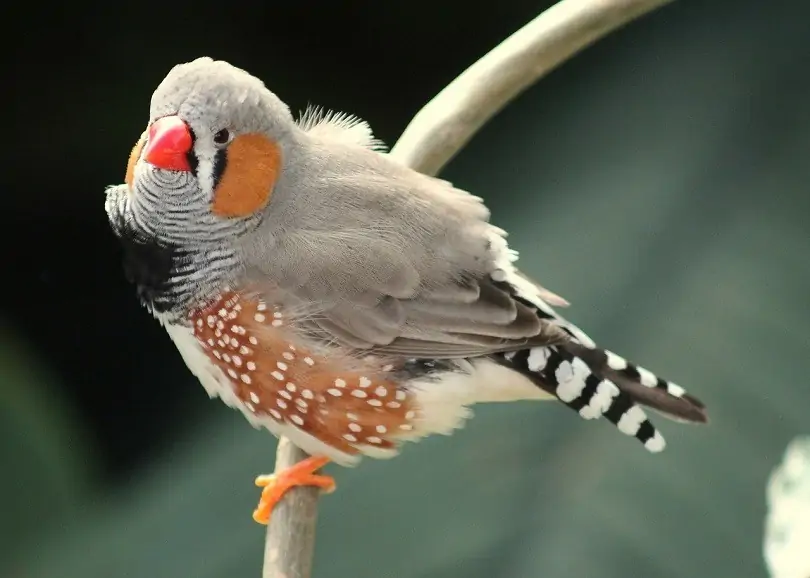
If your family prefers a more hands-off, observational bird-keeping experience, canaries and finches are perfect. These beautiful little singers provide a soothing ambiance in your home with their melodious tunes. While they may not be as interactive as other species, they make a delightful addition to families who appreciate their low-maintenance and independent nature.
Introducing Your Pet Bird to Children
Introducing a pet bird to your children is an essential step in creating a positive, safe, and lasting relationship between them. It’s crucial to ensure both the bird and the children feel comfortable and secure during this process. Follow these guidelines to help your children and your pet bird build a strong and healthy bond.
- Teaching children how to handle and interact with birds safely and respectfully: Before the first introduction, take the time to educate your children on the proper way to handle and interact with the bird. Teach them to approach the bird calmly and quietly, avoid sudden movements, and respect the bird’s personal space. Demonstrating how to gently hold the bird and stroke it with their fingers will help your children build confidence and trust with the new family pet.
- Creating an environment where the bird feels safe and comfortable: Ensure that the bird’s cage and surrounding area is a secure and comfortable space where they feel at ease. Avoid overcrowded, noisy, or chaotic settings during the introduction process. A calm, quiet environment will make the bird more receptive to meeting your children.
- Supervising initial interactions between children and the pet bird: For the first few meetings, closely supervise interactions between your children and the pet bird. Gently guide your children through the process of holding and interacting with the bird, offering praise and encouragement to build their confidence. Keep the initial sessions short to avoid overwhelming the bird, gradually increasing the duration over time.
Remember that building a strong bond between your children and your pet bird takes time and patience. By fostering a safe and nurturing environment, your children and your new feathered family member will form a happy, healthy relationship that will enrich your family’s life for years to come.
Teaching Children Responsibility through Pet Bird Care
Caring for a pet bird offers an excellent opportunity for children to learn responsibility and develop a sense of empathy. By assigning age-appropriate tasks and responsibilities, you can help your child build valuable life skills while nurturing their bond with the family pet.
- Assigning age-appropriate tasks and responsibilities: Depending on your child’s age, assign tasks related to caring for the pet bird. Younger children can help with simple tasks like refilling the bird’s food and water dishes, while older children can take on more complex responsibilities, such as cleaning the cage or preparing fresh fruits and vegetables for the bird’s diet.
- Encouraging a sense of ownership and pride in caring for the pet bird: Involve your child in the decision-making process when it comes to the bird’s care, such as choosing toys or selecting a suitable cage. This participation will help them feel a sense of ownership and pride in caring for their pet bird, making them more likely to take their responsibilities seriously.
- Monitoring and supporting your child’s progress in pet bird care: Keep track of your child’s progress in fulfilling their pet care duties, offering guidance, and support when needed. Praise their accomplishments and gently address any areas where improvement is needed. This ongoing support will help your child grow in their role as a responsible pet caretaker.
Teaching your child responsibility through pet bird care will not only benefit their personal development but also enhance the bond between them and the family pet. By guiding and supporting your child’s efforts, you can foster a nurturing environment that allows both your child and your pet bird to thrive.
Activities to Enjoy with Your Pet Bird and Children
Sharing enjoyable activities with your pet bird and your children can foster a deeper connection between them and create cherished family memories. Engaging in these activities allows for positive bonding experiences and helps your children develop an appreciation for their feathered friend.
- Training pet birds to perform tricks and tasks: Many bird species are highly intelligent and can learn tricks, which makes for a fun and educational activity for children. Teach your children how to train the bird to step up onto their finger, give high-fives, or even play fetch. This not only strengthens the bond between your child and the bird but also provides mental stimulation for your pet.
- Bird-watching and learning about bird species together: Take your love for birds beyond your home by going on bird-watching adventures with your children. Visit local parks or nature reserves to observe and identify various bird species. This activity helps your children develop a deeper understanding and appreciation for birds in general.
- Crafting DIY bird toys and play structures: Encourage your children to express their creativity by crafting DIY bird toys or play structures for your pet bird. Using safe, bird-friendly materials, your children can create an engaging and stimulating environment for your feathered friend. This hands-on activity allows your children to take an active role in enhancing the bird’s quality of life.
- Encouraging creative play with pet birds through storytelling and pretend play: Let your children’s imaginations soar by incorporating the pet bird into their creative play. Create stories or scenarios involving your pet bird as a character and encourage your children to engage in pretend play with their feathered companion.
By participating in these activities together, you’ll create a nurturing environment for your pet bird and foster a deep, meaningful bond between your children and their feathered friend. These shared experiences will become treasured memories that your family can look back on fondly for years to come.
Tips for Maintaining a Happy and Healthy Pet Bird
A happy and healthy pet bird is essential to a harmonious family environment. By following these tips, you’ll ensure that your pet bird thrives, providing endless joy and companionship to your family.
- Providing a proper diet and clean water: A well-balanced diet is crucial for your pet bird’s overall health. Research your bird’s specific dietary needs and provide a mix of high-quality bird pellets, fresh fruits, and vegetables. Ensure your bird has access to clean, fresh water at all times, changing it daily to prevent contamination.
- Ensuring a clean and safe living environment: Regularly clean your pet bird’s cage to prevent the build-up of waste and bacteria. This includes wiping down surfaces, replacing the cage liner, and washing food and water dishes. Additionally, ensure the cage is free of hazards such as loose wires, sharp edges, or toxic materials.
- Regular exercise, mental stimulation, and social interaction: Birds require exercise, mental stimulation, and social interaction to stay happy and healthy. Provide your bird with a variety of toys, perches, and play areas to encourage physical activity and mental engagement. Schedule regular playtime and interaction sessions with your bird to strengthen your bond and meet their social needs.
- Scheduling routine veterinary checkups: Regular veterinary checkups are essential for maintaining your pet bird’s health. Find an avian veterinarian near you and schedule annual visits to monitor your bird’s well-being. These checkups help identify and address any potential health issues before they become serious problems.
By following these tips, you’ll create a nurturing environment for your pet bird, allowing them to thrive both physically and emotionally. A happy and healthy pet bird will undoubtedly contribute to a joyful and harmonious family life, enriching your children’s experience with their feathered friend.
Final Thoughts
Choosing the perfect pet bird for your family with children may seem daunting, but with the right guidance and considerations, you’ll find the ideal feathered companion to enrich your family’s life. By evaluating your family’s needs, understanding the best bird breeds for children, and taking the necessary steps to create a strong bond, you’ll be well on your way to a harmonious and fulfilling relationship with your pet bird.
Remember that teaching children responsibility through bird care, engaging in fun activities together, and maintaining a happy and healthy bird environment are crucial for a successful experience. By following the tips and insights provided in this guide, your family will not only welcome a new pet bird into your home but also embark on a remarkable journey filled with joy, learning, and unforgettable memories.
Frequently Asked Questions
Can pet birds transmit diseases to humans?
While pet birds can carry some diseases that can be transmitted to humans, such as Salmonella and Psittacosis, these instances are rare with proper hygiene and care. Regular vet check-ups and maintaining a clean environment for the bird will minimize risks.
Are there pet bird breeds that should be avoided for families with children?
While there isn’t a definitive list of bird breeds to avoid, larger parrots like macaws and African greys may not be suitable due to their size, noise level, and the level of care they require. It’s crucial to research and consider the specific needs of your family and the bird species before making a decision.
Do pet birds need a companion?
Some birds, like lovebirds and finches, thrive with a companion, while others, such as cockatiels and budgies, can be happy as the only bird in the home. Research your chosen bird species to understand their social needs and consider adopting a pair if companionship is necessary for their well-being.
How do I prepare my home for a pet bird?
Preparing your home involves creating a safe space for your bird by choosing a suitable cage, selecting an appropriate location away from hazards, and providing toys and perches for mental stimulation. Also, remove any toxic plants or substances that may harm your bird and avoid using non-stick cookware, as they release fumes that can be harmful to birds.

